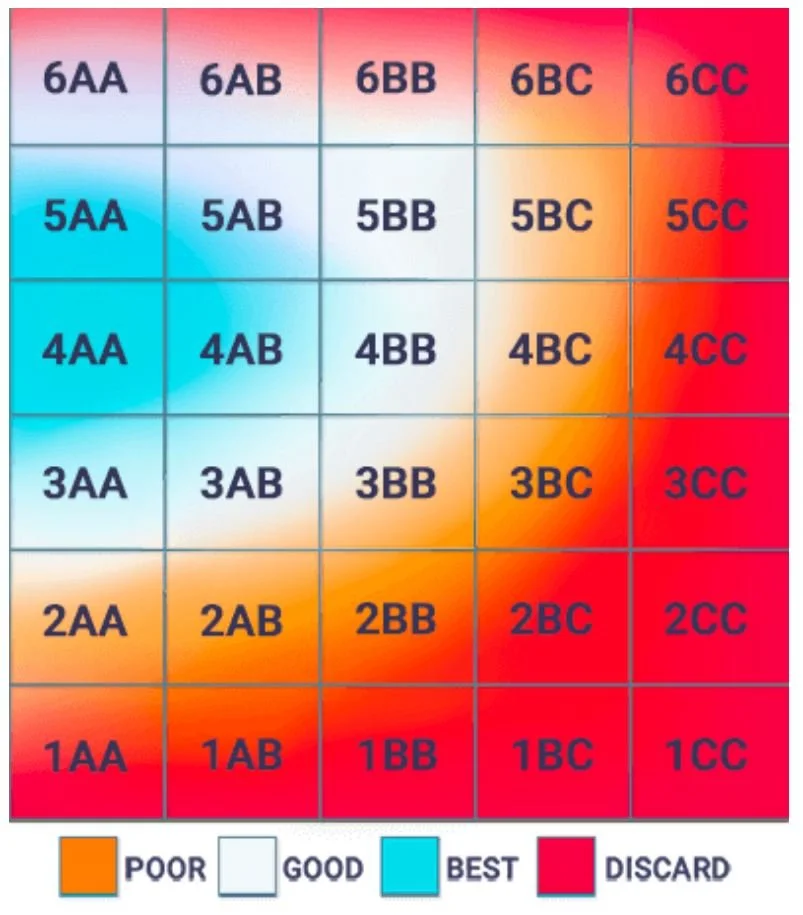What Is a Good Embryo? Decoding Blastocyst Development and Scoring
Embryo quality assessment is a cornerstone of in vitro fertilization (IVF), guiding embryologists in selecting embryos with the highest potential for successful implantation and pregnancy. A pivotal phase in this process is the development and evaluation of blastocysts—the stage at which embryos are most amenable to implantation. Here is what the Founder of Natalist, Halle Tecco, has to say about embryo scoring and success!
Understanding blastocyst development and the criteria used for scoring can provide valuable insights into IVF outcomes.
Beyond the Numbers: What Makes a High-Quality Embryo?
When IVF patients receive their embryo report, terms like "4AA" or "3BB" can seem like a cryptic grading system. But what do these scores actually mean for your chances of success? More importantly—how do embryologists determine which embryos are truly "good" candidates for transfer?
This guide breaks down the science behind blastocyst scoring, what separates a fair embryo from an excellent one, and how grading translates to real-world IVF success.
Blastocyst Development Stage (Expansion and Hatching Status):
Formation of the Blastocoel: Fluid accumulates within the morula, creating the blastocoel, a central cavity that expands as development progresses.
Grade 1: Blastocoel cavity less than half the volume of the embryo.
Grade 2: Blastocoel cavity more than half the volume of the embryo.
Grade 3: Full blastocyst with the cavity completely filling the embryo.
Grade 4: Expanded blastocyst with a cavity larger than the embryo, and the zona pellucida is thinning.
Grade 5: Hatching blastocyst, beginning to emerge from the zona pellucida.
Grade 6: Fully hatched blastocyst, completely emerged from the zona pellucida.
Inner Cell Mass (ICM) Quality:
These cells are destined to develop into the fetus! This is your future baby.
Grade A: Many tightly packed cells.
Grade B: Several loosely grouped cells.
Grade C: Very few cells.
Trophectoderm (TE) Quality:
These cells form the outer layer, which will become the placenta and support tissues.
Grade A: Many cells forming a cohesive layer.
Grade B: Few cells forming a loose layer.
Grade C: Very few large cells.
What Does a "Good" Embryo Look Like?
Top-Tier Blastocysts (Highest Success Rates)
✅ 4AA, 5AA, 4AB, 4BA
Implantation rate: ~60-70% (if chromosomally normal)
Characteristics:
Fully expanded or hatching
Dense, well-defined ICM
Smooth, even trophectoderm
Good but Not Perfect (Still Strong Candidates)
🟢 4BB, 3BB, 5BB, 4BC
Implantation rate: ~40-55%
Characteristics:
Slightly less compact ICM
Minor TE irregularities
Fair/Poor (Lower Success, But Exceptions Exist)
⚠️ 4CC, 3BC, 2BB
Implantation rate: <30%
It may still work if:
PGT-A tested normal
No higher-grade embryos available
I understand this information can be overwhelming, so check out what Sensible Surrogacy has to say and the nice graphic they created!
Of course, all this information is backed by research that you can read for yourself here!
Beyond Grading: Other Factors That Make an Embryo "Good"
1. Chromosomal Normalcy (PGT-A Testing)
A "perfect" 4AA embryo with chromosomal abnormalities may fail.
A "fair" 4BC embryo that’s euploid can still succeed.
2. Developmental Timing
Day 5 blastocysts outperform Day 6 by ~10-15%.
Too fast? (Early hatching) Could indicate abnormalities.
3. Lab Conditions & Expertise
Some labs grade more strictly than others.
Ask: "What percentage of your blastocysts are AA/AB graded?"
What If All My Embryos Are "BC" or Lower?
Don’t panic—options still exist:
PGT-A Testing → Rule out chromosomal issues.
Endometrial Receptivity Testing → Ensure your uterus is optimally prepared.
Lifestyle & Protocol Adjustments → Improve egg/sperm quality for future cycles.
Advancements in Embryo Evaluation
Recent technological advancements, such as artificial intelligence and time-lapse imaging, are enhancing embryo assessment by providing more detailed analyses of embryonic development. These methods aim to improve the accuracy of embryo selection, potentially leading to higher success rates in IVF treatments. Many companies are developing this image recognition technology. It may be coming to a clinic near you!
Key Takeaways
✔ "Good" embryos = 4AA, 4AB, 4BA, 4BB (high expansion + strong ICM/TE).
✔ Grading isn’t everything—euploidy (PGT-A) matters just as much.
✔ Day 5 blasts generally outperform Day 6.
✔ Even "BC" embryos can work if genetically normal.
Ask Your Embryologist:
"How does your lab’s grading compare to others?"
"Would you recommend transferring this embryo based on its full history?"
Understanding blastocyst development and the criteria used for scoring provides valuable insights into the IVF process. While embryo grading offers a standardized approach to assess developmental potential, it is essential to recognize that each embryo is unique, and multiple factors influence the success of implantation and pregnancy. As always, embryo grading is a subjective process, so take this information for what it is. Genetic testing is the only true way to determine the health of a good embryo!
“Embryo grading is like plating a dish—how it looks at the moment. But the true flavor? That comes from the genetic testing, the real ingredient that makes everything work.”
